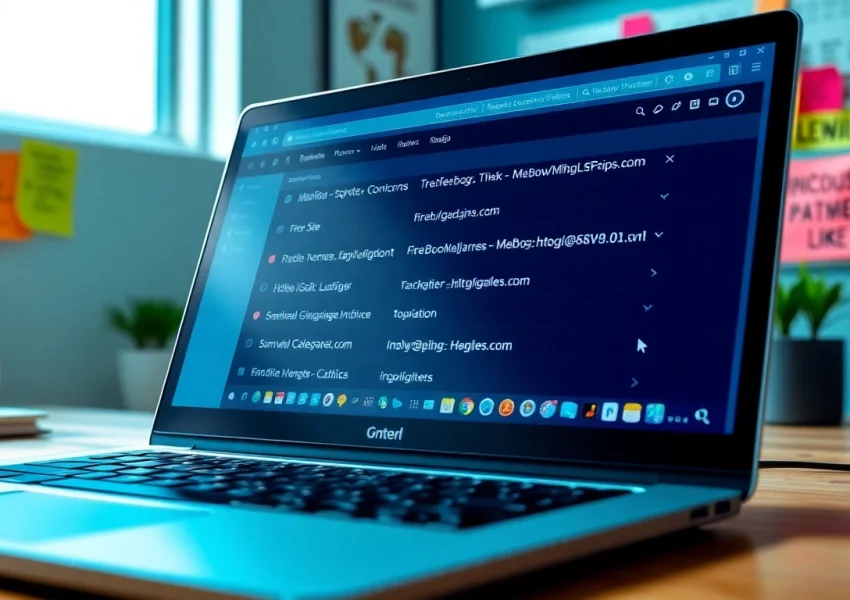Understanding the Live Stream Audience
Live streaming has dramatically transformed how audiences consume content, allowing real-time interaction and feedback between the streamer and viewers. Understanding the Live Stream Audience requires a deep dive into their demographics, behavior patterns, and engagement levels. Each factor plays a crucial role in shaping the success of live-streaming events, tailored content, and interactive experiences.
Demographics of Online Viewers
Demographics refer to the statistical characteristics of a population, such as age, gender, geographical location, and socio-economic status. Analyzing these demographics helps content creators tailor their streams to suit their audience’s preferences, leading to higher engagement and retention rates.
Recent studies reveal that younger audiences, particularly those aged 18–34, make up the majority of live stream viewers. This group is not just tech-savvy but also seeks interactivity, favoring platforms that offer real-time communication opportunities with their favorite streamers. Conversely, audiences aged 35 and older are growing in numbers, often gravitating towards specific niches like gaming, beauty, or cooking streams.
Gender demographics also play a critical role in determining the content and presentation style of live streams. A more significant proportion of male audiences can be found in gaming streams, whereas lifestyle and beauty streams tend to attract more female viewers. Furthermore, understanding geographical demographics can provide insights into time zones and cultural preferences that can affect scheduling and content planning.
Behavior Patterns During Live Streams
Analyzing the behavior patterns of live stream audiences is vital for creating engaging content. Several key patterns arise based on the platform used for streaming, the type of content being shared, and the interactive elements involved.
Viewer behavior typically encompasses aspects like watch time, peak viewing periods, and interaction rates. For instance, viewers tend to engage more during Q&A sessions or polls. Interaction rates often spike significantly when the streamer acknowledges viewers by name or responds to comments and questions in real-time. This highlights the importance of fostering a sense of community and emphasizing viewer participation during streams.
Another notable behavior pattern includes multi-device usage. Many viewers engage with live streams via smartphones, tablets, or computers, switching between platforms instantly. As a result, streamers should consider using a responsive layout that accommodates viewers accessing content from various devices to enhance the overall experience.
Importance of Audience Engagement
Audience engagement is pivotal in building a loyal following and converting casual viewers into dedicated fans. Engaged audiences are more likely to participate actively, share the stream with their networks, and contribute to the growth of the streamer’s brand.
Effective engagement strategies include incorporating live polls, question-and-answer sessions, and shout-outs to viewers. These strategies create a sense of belonging and investment in the content. Moreover, studies show that when viewers feel directly involved, they are more likely to return for future streams, further maximizing audience reach and revenue potential. These engagements ultimately lead to a thriving community around the live stream, creating opportunities for monetization through sponsorships and merchandise sales.
Building Interaction for Your Live Stream Audience
Building interaction within your live streaming events is essential for enhancing viewer experience and ensuring high levels of engagement. By utilizing various strategies, content creators can foster a more vibrant community around their streams.
Utilizing Real-Time Polls and Q&A Sessions
Real-time polls and Q&A sessions are incredibly effective tools for increasing viewer interaction. Polls allow viewers to share their opinions on relevant topics, while Q&A sessions enable direct communication between the streamer and their audience.
Implementing polls can be done effortlessly through features available on many popular streaming platforms. By posing questions related to the stream, streamers can gain valuable insights into viewer preferences and foster further discussion. For example, a gaming streamer might poll audiences about which game they would like to see streamed next, thus promoting a sense of ownership over content direction.
Q&A sessions allow viewers to ask questions directly, making them feel valued and involved. This interaction is particularly important during educational streams or workshops, where immediate feedback can enhance learning outcomes. Streamers should encourage viewers to submit questions throughout the stream, ensuring that they address these directly during designated Q&A segments.
Creating Interactive Content that Resonates
Beyond polls and Q&A sessions, creating content that resonates with audiences is vital for sustained interaction. Streamers should focus on understanding their audience’s interests and crafting content that aligns with those preferences.
Incorporating storytelling elements, humor, and relatability into streams enhances overall engagement. Streaming content that is educational, entertaining, or both also tends to result in higher viewer satisfaction. When viewers feel connected to the content emotionally, they are more likely to participate in discussions and share the stream with others.
Additionally, leveraging guest appearances or collaborations with other creators can introduce fresh perspectives and build excitement among viewers. This can transform a standard live stream into an engaging event, making viewers look forward to future content and share it with their networks.
Integrating Social Media for Broader Engagement
Social media is a powerful tool for extending the reach of live streams and engaging audiences outside the streaming platform. Promoting streams on various social media channels can attract new viewers and keep existing audiences engaged.
Streaming platforms generally allow streamers to integrate social media sharing buttons, making it easy for viewers to share their excitement with friends. Additionally, streamers are encouraged to maintain an active presence on platforms like Twitter, Instagram, and Facebook, where they can post updates, behind-the-scenes content, and reminders for upcoming streams.
Utilizing hashtags and engaging with trending topics can amplify visibility and attract prospective viewers interested in specific content types. By consistently posting and interacting with followers on social platforms, streamers can create a thriving online community that supports and enhances the live streaming experience.
Technical Aspects to Enhance Live Streaming Experience
Technical aspects of live streaming significantly impact the quality of viewer experience. From the equipment used to the platforms chosen for streaming, understanding these technical requirements is crucial for success.
Choosing the Right Equipment for Streaming
The right equipment for live streaming includes cameras, microphones, capturing devices, and streaming software. High-quality audio and video are essential; poor quality can lead to viewer disengagement and negative perceptions of the stream.
For video, a high-definition (HD) camera is crucial. Additionally, screen capture software is helpful for streamers who wish to share their desktop or gaming interfaces with viewers. On the audio side, investing in a good microphone will enhance sound quality, making interactions clearer and more enjoyable for audiences.
Aside from the camera and audio equipment, streamers should also ensure they have a stable and high-speed internet connection. A wired connection is often more reliable than Wi-Fi, reducing latency and buffering issues that could detract from the live streaming experience.
Optimizing Video Quality and Latency
Video quality and latency can significantly affect viewer experience during live streams. High latency can lead to delays between what’s happening on screen and audience interactions, resulting in a disconnect between the streamer and viewers.
Streamers should optimize their video settings according to the platform’s specifications. Common streaming resolutions are 720p and 1080p, with 60 frames per second (fps) providing a smoother viewing experience. Testing different settings before going live can help achieve the best performance level that balances quality and connection speed.
Moreover, using a direct Ethernet connection instead of Wi-Fi, minimizing background applications that consume bandwidth, and using a reliable streaming platform known for fast performance can reduce latency and enhance the overall viewer experience.
Tools for Monitoring Audience Engagement
Monitoring audience engagement during a live stream is essential for real-time adjustments and future improvements. Several tools can facilitate this process, providing valuable insights into viewer behavior and interaction.
Many streaming platforms come with built-in analytics tools that track metrics related to audience engagement, including viewer counts, peak concurrent viewers, chat engagement rates, and watch time. Accumulating this data helps streamers identify which elements resonate well with their audience and which aspects might need improvement.
Additionally, third-party analytics platforms can offer deeper insights into viewers’ demographics, behaviors, and preferences. By analyzing this data, streamers can refine their content strategies and adapt their engagement tactics to suit the audience’s needs effectively.
Analyzing Your Live Stream Audience Metrics
Analyzing audience metrics provides essential insights into the strengths and weaknesses of live streaming efforts. Understanding these metrics enables content creators to make data-driven decisions that enhance overall performance and viewer satisfaction.
Identifying Key Performance Indicators (KPIs)
Key Performance Indicators (KPIs) are measurable values that indicate how effectively a streamer is meeting their objectives. Common KPIs for live streaming include average watch time, viewer retention rates, chat engagement, and follower growth rates.
Streamers can use these metrics to gauge the impact of their content. For instance, if average watch time is low, it may indicate the need to improve content quality or audience engagement strategies. Similarly, high viewer retention rates typically reflect well on the streamer’s ability to maintain viewer interest throughout the broadcast.
Setting specific goals for these KPIs will help measure progress over time. By regularly reviewing these indicators, streamers can align their strategies with audience expectations and ultimately improve performance.
Using Analytics to Improve Future Streams
Using analytics from previous live streams is vital for continuously improving streaming content and engagement strategies. Collecting and analyzing data allows streamers to identify patterns and trends in audience behavior.
For example, if analytics reveal that engagement spikes during specific segments, streamers can consider expanding those areas or introducing similar elements into future broadcasts. Conversely, if certain content receives low engagement, it may warrant reevaluation or a different approach altogether.
Utilizing feedback from audience surveys and chat interactions can also provide qualitative insights alongside quantitative data. Encouraging feedback can help streamers understand what content viewers find valuable or entertaining, leading to more tailored and relevant streams in the future.
Adapting Content Based on Audience Feedback
Adapting content based on audience feedback enhances the connection between streamers and viewers. When audiences see that their opinions are valued and taken into account, they are more likely to engage actively and foster a positive community atmosphere.
Encouraging viewers to provide feedback through polls, surveys, or direct chat interactions allows streamers to collect insights about audience preferences and interests. Streamers should continuously assess this feedback and apply it to refine their content strategies.
Additionally, proactive communication with viewers about changes made in response to their feedback reinforces the importance of audience participation and fosters a stronger community bond. By cultivating this responsiveness, streamers not only enhance viewer satisfaction but also build a loyal following that is likely to return for future streams.
Case Studies of Successful Live Stream Engagement
Examining case studies of successful live stream engagements provides actionable insights into effective strategies and techniques. Learning from these examples can help content creators refine their methods for maximizing audience engagement.
Brands that Nail Audience Interaction
Certain brands have achieved notable success in engaging their live stream audiences effectively. For instance, Glossier, a popular beauty brand, utilizes live streaming for product launches and tutorials, integrating real-time audience feedback. Their approach involves timely interaction, allowing viewers to ask questions about the products and receive immediate responses, significantly enhancing engagement and conversion rates.
Furthermore, brands like Nike host fitness challenges via live stream, where viewers can participate in real-time workouts, creating an immersive experience. These initiatives not only provide entertainment but also allow for community building and direct interaction with the audience.
Lessons from Popular Live Streaming Events
Popular live streaming events, like E3 for gaming or major award shows, reveal crucial insights into successful audience engagement. These events often feature interactive components, such as live polls and Q&A sessions, ensuring viewers remain actively involved.
The use of countdowns and live reactions on social media platforms creates a buzz leading up to the event, drawing audiences to engage at multiple touchpoints. Analysis of viewer metrics from these events shows that high levels of interaction correlate with increased viewership and brand loyalty.
Strategies Adopted by Industry Leaders
Industry leaders across various sectors have demonstrated effective strategies for live streaming engagement. For example, popular gaming platforms like Twitch employ streamlined chat features that promote viewer participation and interaction in real-time.
Additionally, many industry leaders emphasize community involvement through co-streaming or guest appearances, introducing various perspectives and attracting diverse audiences. Incorporating these strategies can inspire other content creators to adopt similar approaches and enhance their own live streaming efforts.






